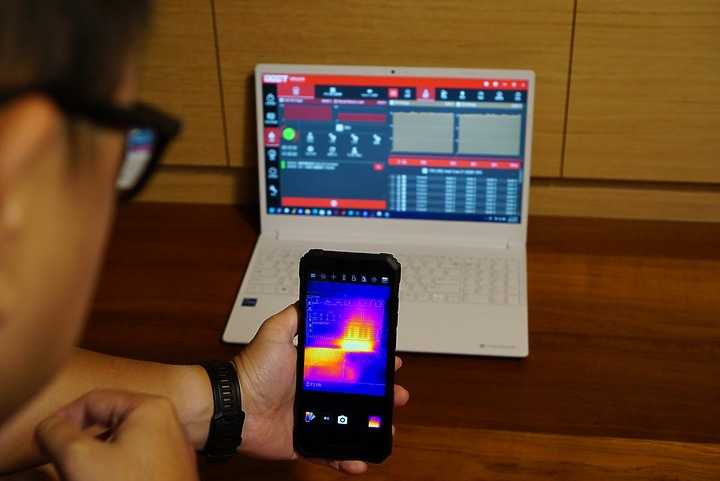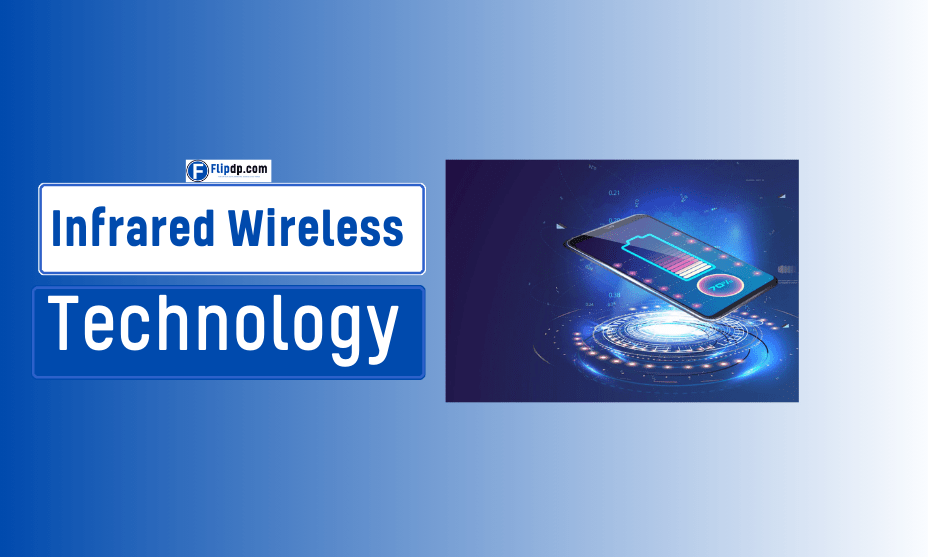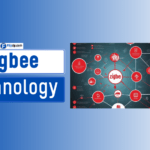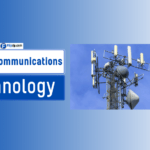Introduction
In the rapidly evolving landscape of technology, infrared wireless technology has emerged as a significant player, transforming how we connect devices and communicate. From remote controls to sophisticated communication systems, this technology has made its mark in various fields, promising speed, efficiency, and convenience.
In this article, we will delve into the world of infrared wireless technology, examining its principles, benefits, applications, and future potential, while also addressing common misconceptions and challenges associated with it.
What is Infrared Wireless Technology?

Infrared wireless technology refers to the use of infrared (IR) radiation for communication and data transfer between devices. Operating in the electromagnetic spectrum, infrared waves lie between visible light and microwaves, with wavelengths ranging from 700 nanometers to 1 millimeter.
The technology utilizes infrared light to transmit data without physical connections, making it an essential component in various applications, including remote controls, data transmission, and communication devices.
Key Characteristics of Infrared Wireless Technology
- Line-of-Sight Communication: Infrared communication typically requires a direct line of sight between the transmitting and receiving devices. This means obstacles, such as walls or furniture, can disrupt the signal. For applications requiring greater flexibility and range, technologies like Zigbee Technology can be more effective.
- Short Range: Infrared technology is effective over short distances, usually within a range of a few meters. This limitation can be both an advantage and a disadvantage, depending on the application. In contrast, Zigbee technology offers a longer range and the ability to penetrate obstacles, making it suitable for various scenarios.
- Security: Infrared signals are less susceptible to eavesdropping compared to other wireless technologies, as the direct line of sight requirement limits the chances of interception. However, Zigbee Technology also prioritizes security, employing encryption to protect data transmissions.
- Low Power Consumption: Infrared devices consume minimal power, making them suitable for battery-operated gadgets and applications where energy efficiency is paramount. Similarly, Zigbee technology is known for its low power consumption, making it ideal for IoT devices and smart home applications.
Benefits of Infrared Wireless Technology

1. High-Speed Data Transfer
One of the primary advantages of infrared wireless technology is its ability to provide high-speed data transfer. Infrared communication can reach data rates of up to several megabits per second (Mbps), making it ideal for applications requiring rapid transmission, such as video streaming and file transfers.
For example, infrared devices used in home entertainment systems can quickly transmit high-definition audio and video signals between components.
2. Minimal Interference
Infrared technology operates on specific wavelengths that are less likely to encounter interference from other wireless devices, such as Wi-Fi or Bluetooth. This feature is particularly beneficial in crowded environments where multiple wireless signals coexist. The reduced risk of signal degradation ensures reliable communication, making infrared technology a preferred choice in industrial settings and healthcare facilities.
3. Enhanced Security
As mentioned earlier, infrared communication is inherently secure due to its line-of-sight nature. This characteristic makes it difficult for unauthorized users to intercept signals, providing a safer option for transmitting sensitive data. Many organizations utilize infrared technology for secure communication in banking, military applications, and confidential business transactions.
4. Cost-Effectiveness
Implementing infrared wireless technology is often more affordable than other wireless solutions. The components required for infrared systems, such as LED emitters and photodetectors, are relatively inexpensive and widely available. Additionally, the low power consumption of infrared devices contributes to long-term cost savings, particularly for battery-operated applications.
5. Versatility Across Applications
Infrared wireless technology finds applications across a broad range of industries. Some notable uses include:
- Remote Controls: Commonly used in televisions, air conditioners, and various household appliances.
- Data Communication: Used in laptops, smartphones, and tablets for short-range data transfers.
- Industrial Automation: Employed in manufacturing processes for machine-to-machine communication.
- Healthcare: Utilized in medical devices for patient monitoring and data transmission without physical connections.
6. Simplified Installation and Maintenance
Infrared systems are typically straightforward to install, requiring minimal configuration and maintenance. The lack of complex wiring and network infrastructure simplifies setup, making it an attractive option for both consumers and businesses.
7. Eco-Friendly Technology
The energy efficiency of infrared wireless technology contributes to a smaller carbon footprint, aligning with global efforts to promote sustainable practices. As organizations strive to reduce energy consumption, the adoption of infrared technology can play a role in achieving environmental goals.
Common Applications of Infrared Wireless Technology

1. Consumer Electronics
Infrared wireless technology is perhaps best known for its use in consumer electronics, particularly remote controls for televisions, DVD players, and sound systems. These devices utilize infrared signals to send commands to electronic appliances from a distance, enhancing user convenience and experience.
2. Wireless Data Transfer
Infrared technology allows for the wireless transfer of data between devices such as laptops and smartphones. This application is particularly useful for transferring files, photos, and videos without the need for cables. Infrared data association (IrDA) protocols enable secure and efficient data exchanges in various devices.
3. Healthcare Monitoring
In healthcare, infrared wireless technology is used for patient monitoring systems that transmit data from medical devices to healthcare providers without physical connections. This non-invasive approach allows for continuous monitoring and timely interventions, ultimately improving patient outcomes.
4. Industrial Automation
Infrared technology is widely employed in industrial automation for machine-to-machine communication and remote control of equipment. This application enhances operational efficiency by enabling seamless communication between devices, reducing downtime, and improving productivity.
5. Security Systems
Infrared sensors are integral components of modern security systems. They detect motion and heat signatures, providing an additional layer of security for residential and commercial properties. This technology ensures reliable monitoring and alerting capabilities, enhancing overall security measures.
Addressing Common Misconceptions
1. Limited to Remote Controls
While infrared wireless technology is commonly associated with remote controls, its applications extend far beyond consumer electronics. As discussed, it plays a vital role in data communication, healthcare monitoring, and industrial automation.
2. Obsolete Technology
Despite the rise of alternative wireless technologies like Bluetooth and Wi-Fi, infrared wireless technology remains relevant and continues to evolve. Its unique characteristics make it suitable for specific applications where other technologies may fall short.
3. Poor Performance in Bright Light
A common misconception is that infrared technology is ineffective in bright light conditions. While excessive ambient light can interfere with some infrared devices, most modern systems are designed to mitigate this issue, ensuring reliable performance even in well-lit environments.
Challenges of Infrared Wireless Technology
1. Line-of-Sight Limitations
The requirement for a direct line of sight between transmitting and receiving devices can be a significant drawback, especially in complex environments. This limitation can hinder usability in scenarios where obstacles are present.
2. Short Range
While infrared technology excels in short-range applications, its limited range can be a disadvantage in situations requiring long-distance communication. In contrast, other wireless technologies like Wi-Fi are designed for broader coverage.
3. Compatibility Issues
Not all devices support infrared communication, which can lead to compatibility issues. Users must ensure that their devices are equipped with infrared capabilities to utilize this technology effectively.
4. Potential for Signal Degradation
Environmental factors, such as temperature and humidity, can affect the performance of infrared signals. In certain conditions, the signal may degrade, leading to reduced communication efficiency.
Future Trends in Infrared Wireless Technology
As technology continues to advance, infrared wireless technology is poised for further growth and innovation. Some future trends to watch include:
1. Integration with IoT
The Internet of Things (IoT) is driving the demand for seamless communication between connected devices. Infrared technology can complement existing wireless technologies, enhancing data transfer and control in IoT ecosystems.
2. Enhanced Security Features
As cybersecurity concerns rise, the demand for secure communication methods will increase. Infrared wireless technology’s inherent security features may be further developed to meet the needs of sensitive applications.
3. Development of Advanced Sensors
Advancements in sensor technology may lead to improved infrared devices that can operate effectively in diverse environments, overcoming some of the current limitations associated with signal degradation.
Conclusion
Infrared wireless technology is a versatile and powerful solution that has significantly impacted various industries. Its benefits, including high-speed data transfer, minimal interference, enhanced security, and cost-effectiveness, make it an attractive option for a wide range of applications.
While challenges such as line-of-sight limitations and short range exist, ongoing advancements promise to address these issues and expand the technology’s potential.
As we explore the future of communication and connectivity, infrared wireless technology remains a crucial component, offering innovative solutions for modern challenges. By understanding its benefits and applications, individuals and organizations can leverage this technology to enhance their operations and improve user experiences.
FAQs, Infrared Wireless Technology
1. What is infrared wireless technology?
Infrared wireless technology refers to a method of communication that uses infrared radiation to transmit data wirelessly over short distances. This technology operates at a frequency higher than visible light but lower than microwaves, enabling data transfer between devices without the need for physical connections.
2. How does infrared wireless technology work?
Infrared wireless technology works by transmitting signals through infrared light. Devices equipped with infrared emitters and receivers send and receive data packets via infrared waves. These signals can be modulated to carry information, allowing for effective communication between devices, such as remote controls and wireless headphones.
3. What are the advantages of using infrared wireless technology?
Some advantages include:
High data security: Infrared signals do not penetrate walls, making them less susceptible to interception.
Low interference: Infrared technology is less likely to face interference from other wireless technologies, such as Wi-Fi or Bluetooth.
Low power consumption: Infrared devices typically consume less power, which can extend battery life in portable devices.
4. What are the limitations of infrared wireless technology?
Infrared wireless technology has some limitations, including:
Limited range: Infrared communication typically works within a short range, usually up to 30 feet.
Line of sight requirement: Devices must be in direct line of sight for effective communication, as obstacles can disrupt the signal.
Environmental sensitivity: Infrared signals can be affected by bright light sources, such as sunlight or fluorescent lights.
5. Where is infrared wireless technology commonly used?
Infrared wireless technology is commonly used in:
Remote controls: For TVs, air conditioners, and other home appliances.
Wireless data transfer: In devices like infrared printers and mobile phones.
Health care: For devices such as patient monitors and medical imaging systems.
Industrial applications: For short-range communication in automated systems.











